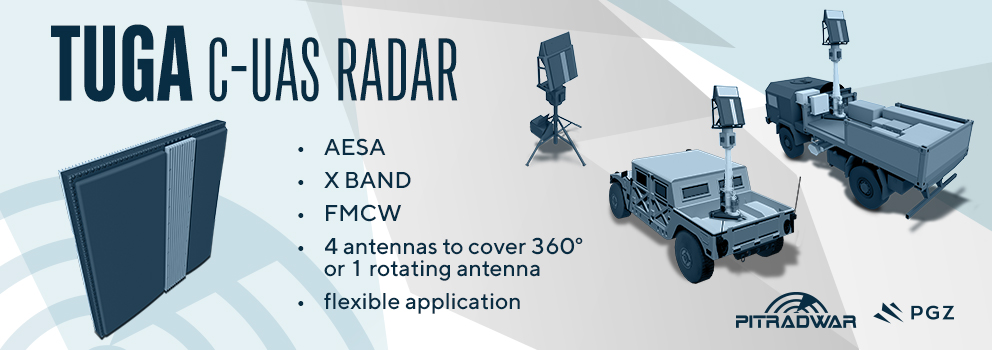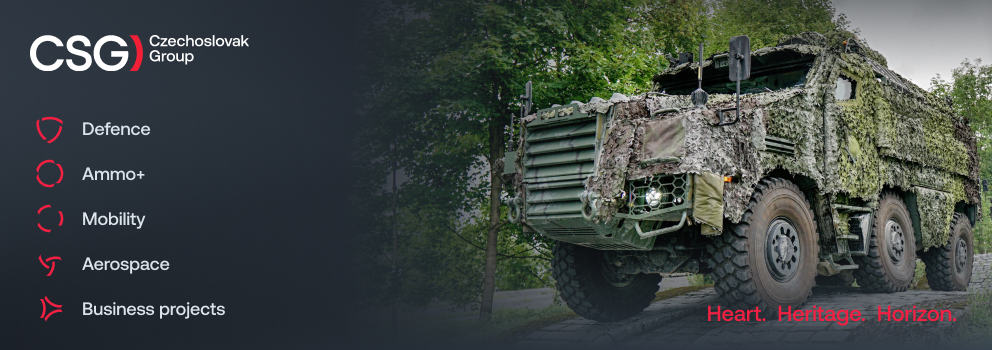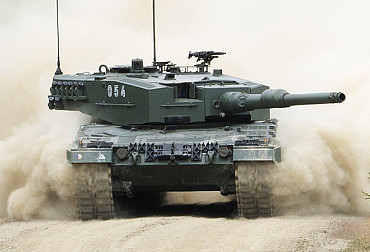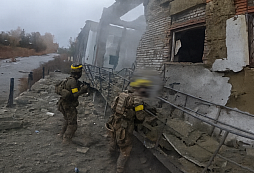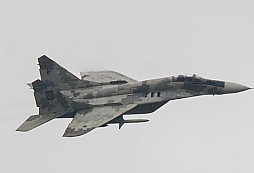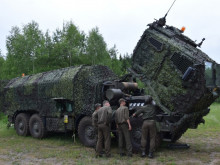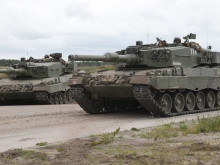Europe plans a ‘Drone Wall’ to strengthen NATO’s eastern flank
In response to Russian attacks, European allies are pushing for the rapid development of a joint defense against unmanned aerial vehicles. The so-called drone wall is to be created by purchasing proven technologies worth billions of euros and helping to strengthen NATO's eastern flank so that the recent situation in Poland and some other partner countries, whose airspace Russia has repeatedly violated, is not repeated. These efforts go hand in hand with strengthening NATO's presence on the Alliance’s eastern flank, drawing inspiration from proven practices on the Ukrainian battlefield. In this context, a Czech helicopter unit from Náměšť nad Oslavou has also been deployed to eastern Poland. According to Defense Minister Jana Černochová, this demonstrates that the Czech Republic is fulfilling its commitment to a close partner.
The recent incident in Poland was the largest violation of NATO airspace by Russia in years. On the night of September 10, the Russians sent twenty drones over Poland, and although most of them were Gerbera types used to confuse air defenses and as decoys without payloads, the allies agree that it was a test of NATO's readiness. On the one hand, NATO responded quickly and accurately—F-35 fighter jets took off from the Netherlands and shot down those drones that did not crash or return to Ukraine, and Polish F-16s were also in the air. Based on this incident, European governments consider it necessary to strengthen their defenses against airborne threats using more accessible methods.
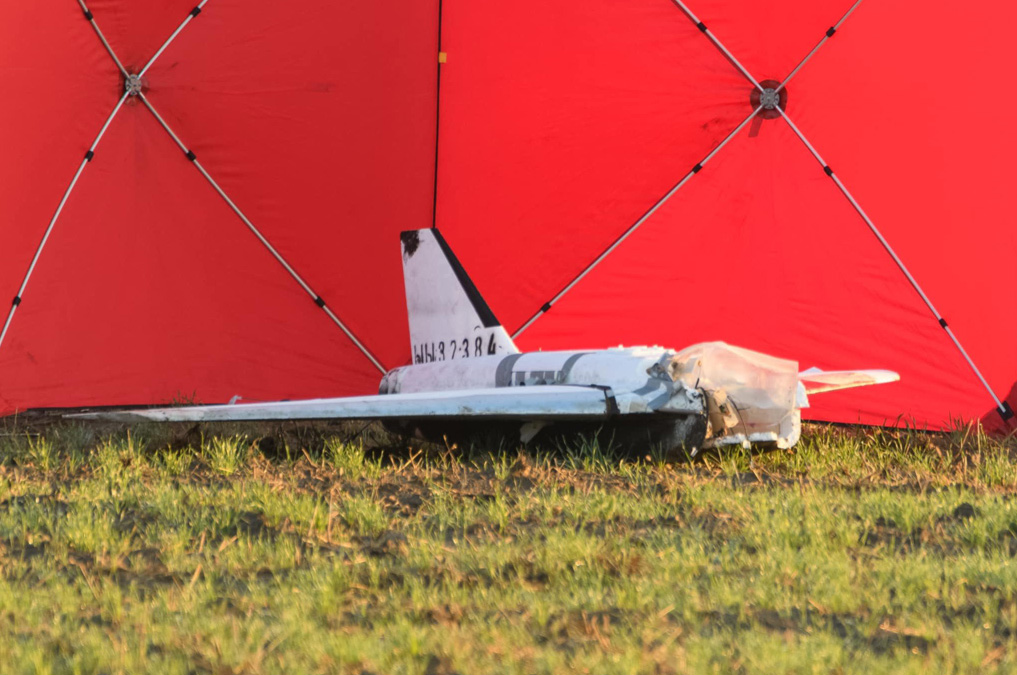
The European Union is therefore now pushing for the creation of a program called “wall against drones,” for which Brussels has allocated billions of euros, which it wants to invest as soon as possible in light of the latest attack on Poland (and previous smaller-scale attacks on Romania). The purchase is to target proven technologies that are effective in defending against occupation strikes in Ukraine and which, in practice, cost many times less than the costly launches of fighter jets and firing of their expensive missiles. To give you an idea, the production of one Russian Gerbera drone costs the equivalent of approximately CZK 200,000, while the price of the Iranian-designed Shahed, manufactured under Russian license under the name Geran, reaches a maximum of CZK 1 million, which is the same as one hour of operation of an F-35 aircraft. One of its AIM-9 Sidewinder missiles costs up to CZK 9 million.
🇵🇱🇷🇺🇺🇦
— WarNewsPL (@WarNewsPL1) September 10, 2025
❗️ Przed kilkunastoma minutami znaleziono następnego drona. Tym razem w pobliżu Lublina. Jest to miejscowość Bychawka Trzecia. Jak wyjaśniał w rozmowie z nami właściciel posesji, obiekt zauważono po powrocie z pracy. Od wczesnego rana nikogo w domu nie było - informuje… pic.twitter.com/n8K3kISrKr
“European defense is too fragmented, but in this particular area we really need to see much greater coordination,” an unnamed EU official told the Financial Times. "You can't have one country on the front line doing one thing at its border and another doing something else. Russia will simply adapt its approach to our weaknesses," the EU official added. NATO members on the eastern flank are thus to receive nearly €100 billion (almost CZK 2.5 trillion) in defense-related loans from a total of €150 billion obtained from the shared EU budget. According to European Commission President Ursula von der Leyen, all capabilities will be developed and maintained jointly with the participation of all partners concerned.
The EU also plans to create a drone alliance with Ukraine, for which it has allocated €6 billion. “It will turn Ukrainian ingenuity into an advantage on the battlefield and in joint industrialization,” von der Leyen commented on the move. “This will give Europe independent strategic capabilities. We must invest in real-time space surveillance so that no movement of forces goes unnoticed. We must heed the call of our Baltic friends and build a wall against drones,” the EC president added in response to Russia's biggest provocation to date.
Violation of Polish airspace by Russian drones is unacceptable.
— Ruben Brekelmans (@DefensieMin) September 12, 2025
We welcome NATO’s Operation Eastern Sentry to strengthen the eastern flank.
This aligns with the Dutch commitment in Poland: 4 F-35s now, and more air defence (Patriots, NASAMS, counter drones) coming in December. pic.twitter.com/Yi5hyx6ozn
The North Atlantic Treaty Organization is also launching its own initiative, called Eastern Sentry, to support air defense on the eastern flank. It involves the deployment of fighter jets, reconnaissance aircraft, and ships stationed from Finland to Bulgaria. Here, too, the focus will be on the ability to detect even smaller, low-flying targets, such as attack suicide drones, which often evade detection by standard radar.
‼️🇵🇱 BREAKING - Poland will rapidly field WLKM 4-barrel 12.7 mm anti-aircraft Gatling guns after an incursion of Russian drones exposed weaknesses in the Polish air-defense shield.
— Visioner (@visionergeo) September 17, 2025
The WLKM is essentially the Polish analogue of the American Minigun. It was first unveiled in 2017… pic.twitter.com/hPWadEsPeR
Ukrainian defenders are already deploying such technologies, refined repeatedly during more than three and a half years of full-scale Russian invasion. These include, for example, acoustic sensors capable of identifying enemy drones by their sound signature. This information is then passed on to mobile teams with anti-aircraft guns and heavy machine guns, which shoot down unmanned aircraft much more cheaply than aircraft. In Poland, for example, there is the WLKM system with a rotating four-barrel machine gun with a 12.7 mm anti-aircraft caliber, capable of firing 3,600 rounds per minute at a distance of up to 2,200 meters.
Jsme v Polsku na místě určení. Připraveni plnit úkoly bok po boku s našimi spojenci.#WeAreNATO #StrongerTogether pic.twitter.com/05L2XVC4ri
— Armáda ČR (@ArmadaCR) September 15, 2025
The Czech government has provided concrete assistance to its partners in the region. It has lent Warsaw three Mi-171Š helicopters from the 222nd Helicopter Squadron of the 22nd Helicopter Air Force Base at Náměšť nad Oslavou Airport. The unit, which was previously deployed in Afghanistan, is not in Poland for the first time; it has participated in flood relief efforts and joint exercises, for example. “We are fulfilling the promise we made to our close ally. Our soldiers are already in Poland and are ready to participate in strengthening the protection of Poland's eastern border airspace,” said Defense Minister Jana Černochová, adding that a total of about 150 soldiers are involved and their deployment is expected to last a maximum of three months.
🇨🇿🤝🇵🇱 #EASTERNSENTRY: Właśnie wylądowali w Polsce żołnierze @ArmadaCR
— Sztab Generalny WP (@SztabGenWP) September 13, 2025
To dowód, że solidarność sojuszniczą, bezpieczeństwo i przyjaźń buduje się ramię w ramię.
Witamy Przyjaciele! ✈️🇵🇱🇨🇿#WeAreNATO #StrongerTogether pic.twitter.com/bKD6crjEDG
“The presence of a helicopter unit in this country represents an important step in alliance cooperation and confirms the Czech Republic's readiness to actively contribute to ensuring security in the region,” said Lieutenant General Václav Vlček, Commander of the Operations Command, in an official army statement. Other partners have also offered assistance, specific equipment, and personnel to strengthen the eastern flank. Denmark will provide two F-16 fighter jets and an anti-aircraft frigate, France will supply three of its Dassault Rafale multi-role aircraft, and Germany will provide four Eurofighters. The United Kingdom has also promised to help guard the region against Russian incursions.
